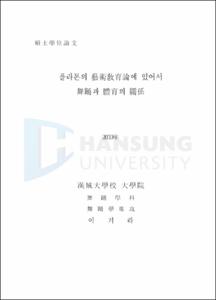플라톤의 藝術敎育論에 있어서 舞踊과 體育의 關係
= Relationship of Dance to Physical Education in Platon's Art Education Theory
- Files in This Item:
-
-
Download
 000000579143.pdf
기타 데이터 / 424.76 kB / Adobe PDF
000000579143.pdf
기타 데이터 / 424.76 kB / Adobe PDF
-
Items in Repository are protected by copyright, with all rights reserved, unless otherwise indicated.